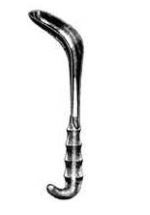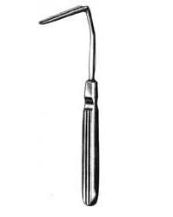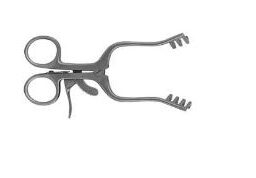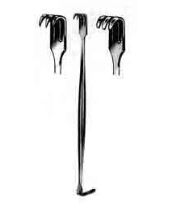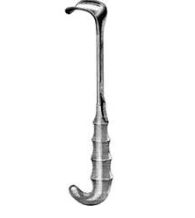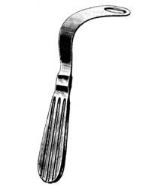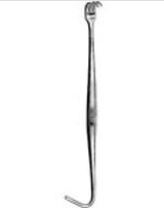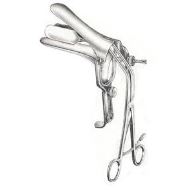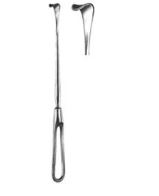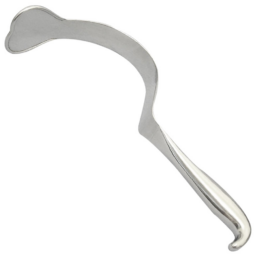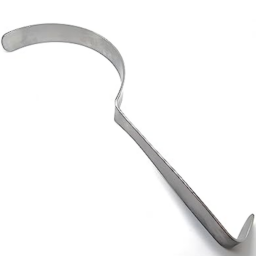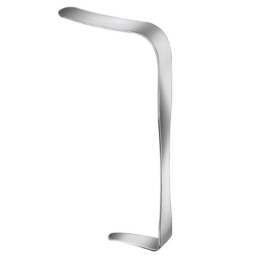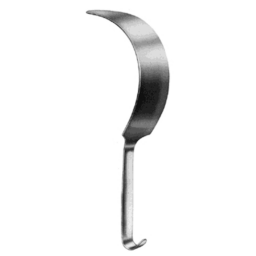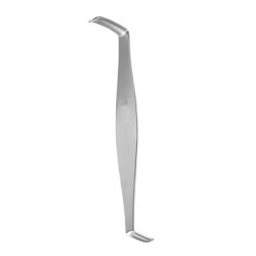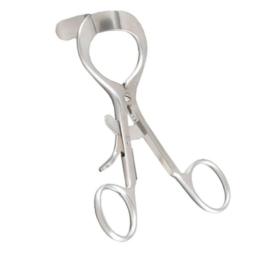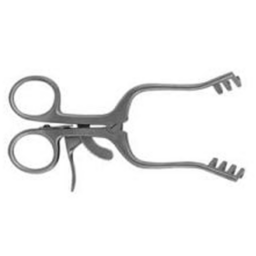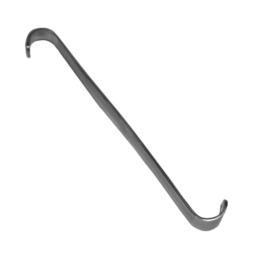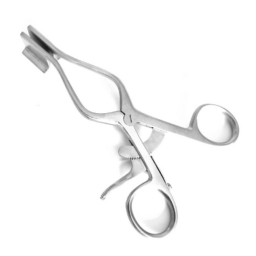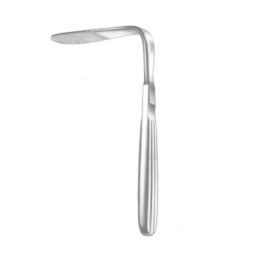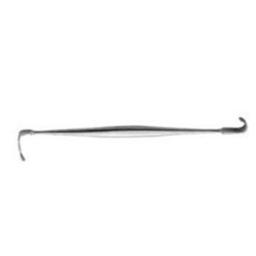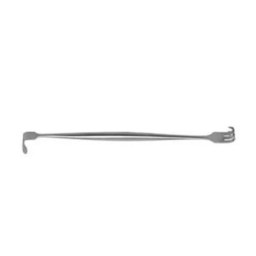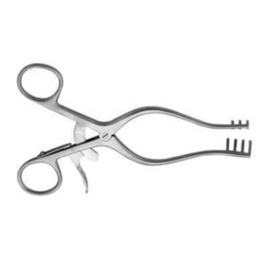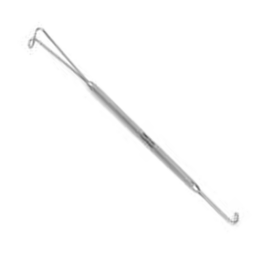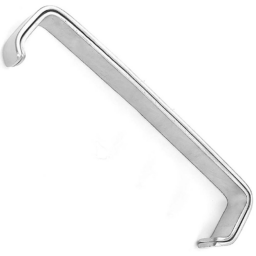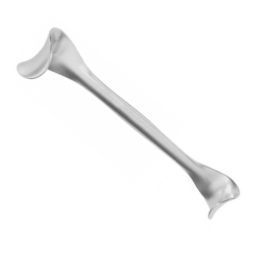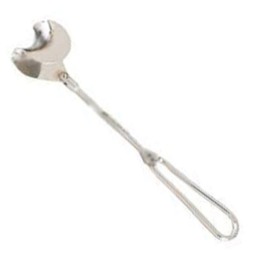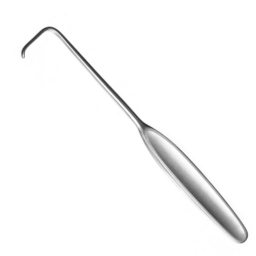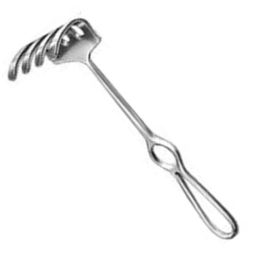Retractors
Showing 1–24 of 127 results
-
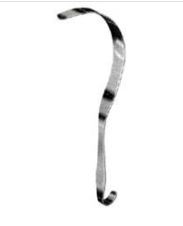
Abdominal Retractors12 Products
-
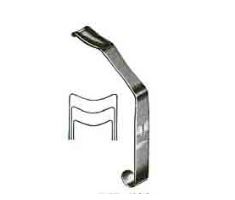
ENT Retractors6 Products
-
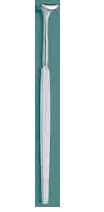
Eye Retractors1 Product
-
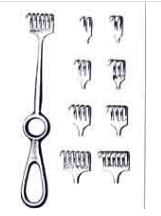
Finger Retractors1 Product
-
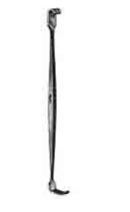
Handheld Retractors36 Products
-
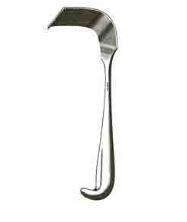
Laminectomy Retractors4 Products
-
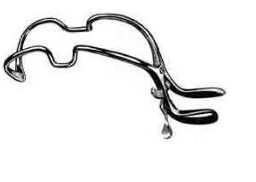
Mouth Retractors18 Products
-
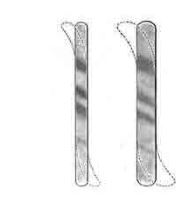
Pediatric & Ribbon Retractors2 Products
-
Rectal Retractors2 Products
-
Rhinoplastic Retractors2 Products
-
Self-Retaining Retractors11 Products
-
Skin Retractors3 Products
-
Thoracic Retractors4 Products
-
Tongue Depressors7 Products
-
Trachea Retractors6 Products
-
Vaginal Retractors10 Products
-
Vein Retractors2 Products
-
12in Harrington Retractor
Item# 104-205FSIRated 0 out of 5$201.89Original price was: $201.89.$149.55Current price is: $149.55.This retractor is 12 inches, and features a blade that is 1.5 inches wide.
-
1in x 10in Deaver Retractor
Item# 526-205FSIRated 0 out of 5$96.95Original price was: $96.95.$71.82Current price is: $71.82.This retractor is 1in x 10in.
-
1in x 9in Deaver Retractor
Item# 716-205FSIRated 0 out of 5$92.05Original price was: $92.05.$68.18Current price is: $68.18.This retractor is 1 in x 9 in.
-
3in x 12in Deaver Retractor
Item# 476-205FSIRated 0 out of 5$116.59Original price was: $116.59.$86.36Current price is: $86.36.This retractor is 3 inches x 12 inches.
-
4.5in Crile Retractor
Item# 254-105FSIRated 0 out of 5$47.86Original price was: $47.86.$35.45Current price is: $35.45.This retractor is 4.5 inches.
-
4.5in Schink Metatarsal Spreader
Item# 482-305FSIRated 0 out of 5$233.73Original price was: $233.73.$173.14Current price is: $173.14.This spreader is 4.5 inches.
-
5.5in – Blunt Weitlaner Retractor
Item# 0621-14JJRated 0 out of 5$89.22Original price was: $89.22.$66.09Current price is: $66.09.5.5in- Blunt weitlaner retractor
-
5.5in Luer S-Shape Retractor
Item# 203-168FSIRated 0 out of 5$47.05Original price was: $47.05.$34.85Current price is: $34.85.This retractor is 5.5 inches, and features a double end. One end is 10x5mm, and the other is 14x9mm.
-
5.5in Spread Gelpi Retractor
Item# 5002-14JJRated 0 out of 5$89.10Original price was: $89.10.$66.00Current price is: $66.00.Gelpi Retractor 5.5″ Spread
-
5.5in Weitlaner Retractor, Solid Blades
Item# 282-305FSIRated 0 out of 5$211.91Original price was: $211.91.$156.97Current price is: $156.97.This retractor is 5.5 inches, and features solid blades.
-
5.75in Tobold Tongue Depressor
Item# 231-048FSIRated 0 out of 5$86.93Original price was: $86.93.$64.39Current price is: $64.39.This tongue depressor is 5.75 inches, and features a serrated blade.
-
5in Flexible Retractor w/ 3 Prongs
Item# 007-005FSIRated 0 out of 5$72.90Original price was: $72.90.$54.00Current price is: $54.00.This retractor is 5 inches, and features 3 sharp prongs.
-
6.25in – Blunt Senn Retractor
Item# 0034-14JJRated 0 out of 5$16.32Original price was: $16.32.$12.09Current price is: $12.09.6.25in – Blunt senn retractor
-
6.25in – Sharp Senn Retractor
Item# 0024-14JJRated 0 out of 5$16.94Original price was: $16.94.$12.55Current price is: $12.55.6.25in – Sharp senn retractor
-
6.5in – Blunt Weitlaner Retractor
Item# 0841-14JJRated 0 out of 5$96.95Original price was: $96.95.$71.82Current price is: $71.82.6.5in – Blunt weitlaner retractor
-
6.5in Neivert Knife Guide & Reactor
Item# 803-005FSIRated 0 out of 5$133.94Original price was: $133.94.$99.21Current price is: $99.21.This guide is 6.5 inches, and features a double end and an open, 14mm wide blade.
-
6in 1 Prong Flexible Retractor
Item# 107-005FSIRated 0 out of 5$67.50Original price was: $67.50.$50.00Current price is: $50.00.This flexible retractor is 6 inches, and has 1 sharp prong.
-
6in 2 Prong Flexible Retractor
Item# 207-005FSIRated 0 out of 5$70.20Original price was: $70.20.$52.00Current price is: $52.00.This flexible retractor is 6 inches, and has 2 sharp prongs.
-
6in 3 Prong Flexible Retractor
Item# 307-005FSIRated 0 out of 5$72.90Original price was: $72.90.$54.00Current price is: $54.00.This flexible retractor is 6 inches, and has 3 sharp prongs.
-
6in Farabeuf Retractors, Double End
Item# 007-105FSIRated 0 out of 5$50.58Original price was: $50.58.$37.47Current price is: $37.47.This is a set of 2 retractors that are 6 inches and have double ends.
-
7.5in Goelet Retractor
Item# 353-105FSIRated 0 out of 5$52.94Original price was: $52.94.$39.21Current price is: $39.21.This retractor is 7.5 inches.
-
7.75in Cheek Retractor
Item# 021-048FSIRated 0 out of 5$98.35Original price was: $98.35.$72.85Current price is: $72.85.This cheek retractor is 7.75 inches, and features a 35mm wide swivel blade.
-
7.75in Lahey Retractor
Item# 205-105FSIRated 0 out of 5$65.86Original price was: $65.86.$48.79Current price is: $48.79.This retractor is 7.75 inches.
-
8.5in 4 Prong Ollier Retractor
Item# 700-105FSIRated 0 out of 5$127.10Original price was: $127.10.$94.15Current price is: $94.15.This ollier retractor is 8.5 inches, and has 4 prongs.
Surgical Retractors Designed for Most Medical Procedures
Retractors are essential instruments for surgeons and other healthcare professionals, including dentists, who make surgical incisions, treat wounds and perform other medical procedures. They are also used to give surgeons access to a patient’s internal area by holding back the tissues or organs around or underlying the area. Surgical retractors make it much easier for the physician to work faster and more efficiently by ensuring an unobstructed view.
There is a specially designed surgical retractor shaped to accommodate most body areas. They include the abdomen, ENT, eyelids, joints and small bones, spinal cord (laminectomy procedures), mouth, nerves, bones and muscles (orthopedic procedures), pelvis, rectum, nose, skin, chest (thoracic procedures), tissue, vagina, urological system, trachea and veins. There are also pediatric retractors for surgical procedures involving children and ribbon retractors. Like other retractors, the malleable ribbon retractors are used for a variety of procedures, including retraction of deep wounds and implant surgeries. They are described as malleable because the retractors can be bent as needed.
The retractors are state-of-the-art medical instruments that are available in different widths, shapes and configurations. Surgeons know how important it is to use the correct surgical retractor for the planned procedure. Retractors play an important role in removing organ and tissue obstructions, and opening the edges of wounds and surgical incisions so the surgeon can clearly see into deep cavities. They are also important surgical instruments for exposing cavities for removal of foreign objects and tumors.
Each type of retractor has unique features. For example, the finger retractors are made with two to six prongs and with blunt or sharp prongs. There are straight and s-shaped trachea retractors, and various handle shapes and prong tips on the surgical retractors. There are also numerous handheld surgical retractors and locking retractors that can stay open to free the surgeon’s hands.

